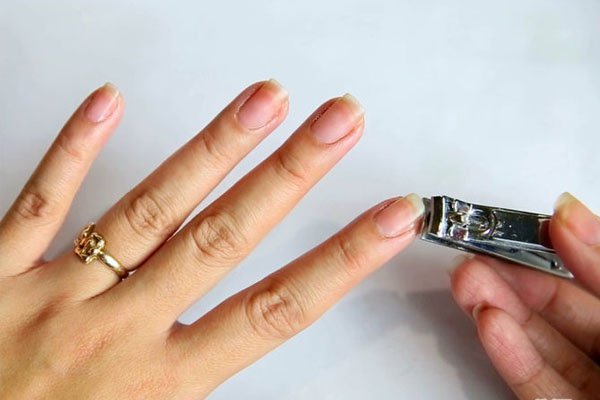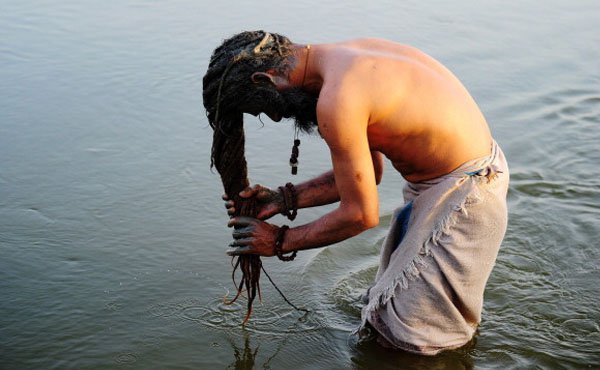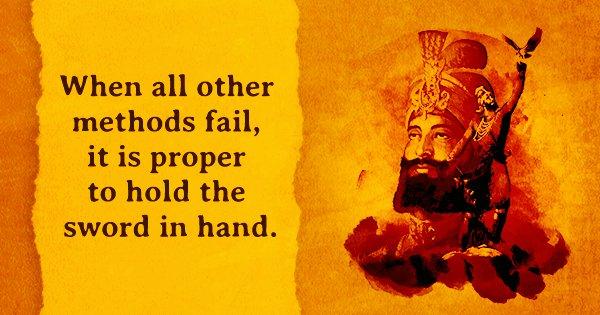India, a country where traditions breathe comfortably next to global technology. We find ourselves standing at the juncture where these two meet, sometimes restless, sometimes nonchalant. As a result there are times when we question age-old practices, while at others accept them unwittingly. It is definitely important to question to prevent a slow degradation of our society into anarchy but it is also important to look for answers and be receptive to answers that others may find.
Attempts have been made time and again to prove that the rituals we label as superstitions were at one point carefully thought scientific procedures. With the passage of time and development of a hierarchical society, this knowledge became more and more esoteric and finally only the rituals were propagated not the reasoning behind them.
Here is an attempt to decode the logic behind some of the age old practices of our ancestors:
1. Don’t step out during an eclipse – Preventing loss of eyesight
Observing the Sun during a solar eclipse can cause retinal burns or ” eclipse blindness “. Based on a series of observations, our ancestors probably reached the conclusion that it was not advisable to set out during an eclipse. The superstition about Rahu’s head blocking the Sun is a story woven around this practice.

Check Out – Commonly Held Stories Behind Today’s Superstitions
2. Do not sleep with your head facing the North – Preventing cardiovascular diseases
Our ancestors probably knew about the relation between Earth’s magnetic field and the human body’s field ( biomagnetism ). They probably made this rule of sleeping with your head in the South because of the harmful effects related to blood pressure and other diseases that asymmetry with the Earth’s magnetic field would create. However, today we only get to hear that ‘sleeping with one’s head in the north is inviting death’ not why.

3. A girl shouldn’t do certain things while she is menstruating – Giving women time for rest
The first sanitary pads were invented in the year 1896, while commercial painkillers like Meftal were not available before the 20th century. Before that, the five stressful days of menstruation which entail cramps and pain for many women were dealt with Indian medicines. Probably women did not work during those days because of discomfort and slowly this became a ritual and degraded to the form of a superstition.

4. Don’t go near a Peepal tree in the night – Avoid inhaling carbon dioxide
Jan van Helmont found out the recipe of plant-food in mid-17th century. Before that the world was clueless about the relation between sunlight, carbon dioxide that magically produces glucose for plants. Our ancestors probably knew about photosynthesis and the effects of inhaling carbon dioxide in the night. Hence people were discouraged from venturing near a peepal tree at night and stories of ghosts were woven around these trees.

Check Out – Indian Superstitions Some Of Us Still Believe In
5. Using lemon and green chilies to avert buri nazar – Encouraging consumption because they are rich in several nutrients
The nimbu totka which is one of the most visible ‘superstitions’ probably stems from a culture that encouraged their use because of the qualities of lemon and chili. Both are rich in different vitamins and thus our ancestors probably tried to propagate their usage through symbols during ceremonies which slowly turned into a totka. Some people also claim that they have pesticidal properties, but this has not been proven.

6. Bathe after attending a funeral ceremony – Preventing infection
Our ancestors did not have vaccination against hepatitis, smallpox and other deadly and contagious diseases. Hence they came up with a set of rituals to be followed after the funeral rites are performed so as to prevent infection from the dead body. Slowly stories about the departed’s soul got linked to this practice.

Check Out – Crazy Superstitions That Every Cricket Fan Religiously Follows
7. The mourning family of a dead person should not cook food until shraddha – Giving them time to cope and rest
There is a ritual in the Hindu religion that prevents the lighting of the hearth in the house of the deceased until the shraddha. Superstition says this is to prevent the burning of the soul of the deceased. However, the practice may have been started to provide rest to the family of the deceased for mourning, to help them cope with the death of a loved one.

Check Out – Indian Superstitions & What They Actually Mean
8. Don’t cut nails after sunset – In the absence of light, one might get hurt
Nail clippers were sharp blades which required precision and light to be used in the absence of which one could get hurt. Hence the tradition of using one during the day.

9. Don’t wash your hair on a certain day – Saving water
The practice of not washing the hair on certain days like Tuesday or Thursday are attributed by some to the water management practices.

10. Sweeping the floor during the evening brings bad luck – Something important might get swept away in the dark
Conduct and discipline are the cornerstones of Indian society. The belief that sweeping the house after sunset brings bad luck ( here ) is a superstitious belief that we have all encountered now and then. Our ancestors probably preferred to clean their house during the day because of the sunlight and to avoid sweeping away something important. This practice like others slowly managed to weave a story around it.

11. Eat curd and sugar before heading out – To keep one cool
The tropical climate of India highly recommends the consumption of curd which has a cooling effect on the stomach. The sugar which is added in generous quantities, before someone is setting out for an important work, provides instant glucose. This combination is hence indispensable for Indians and so its consumption slowly linked itself to good luck.

12. Swallow Tulsi leaves, never chew – Preventing degradation of the enamel
It is widely believed that Tulsi is Goddess Lakshmi’s avatar and hence one should not chew the leaves but directly swallow them. A Quora user, Chander Govindarjan has described that the actual science behind this is that though the Tulsi leaf is healthy, it contains a little amount of Arsenic. Thus chewing it directly causes the teeth to become yellow or results in the degradation of enamel.

Check Out – The Truth Behind 10 Popular Superstitions
13. Crush the head of a snake after killing it – It is capable of attacking with a severed head
Superstition says that one should crush the head of a snake after killing it otherwise its kin might find an image in its eyes and seek revenge. In fact the reason is that a snake can bite or kill a person even with a detached head. And in order to completely neutralize it, it is necessary to crush its head. Also, being a cold-blooded organism, even if some of its vital organs stop working it will stay alive for hours and die a slow and painful death. So it is recommended to crush its head to give it a quick and painless death.

14. Plastering floor with cow dung is auspicious – It acts as a disinfectant
Cow dung plaster is considered auspicious just like any other product of a cow. Hence, mostly all rituals dictate the usage of cow dung to plaster the floor. Our ancestors probably started this practice to guard against insects and reptiles which are repelled by the pungent smell of cow dung. They did not have the luxury to buy bottled commercial disinfectants like we do. But over time this practice became a ritual and we find ourselves following it in spite of it being redundant in the contemporary world.

Check Out – Indian Superstitions And The Possible Logic Behind Them
15. A portion of the umbilical cord is preserved as a part of an elaborate ritual so as to harvest stem cells
Description of jatakarma (burying the umbilical cord in the fork of a sapling tree or storing it in a copper capsule) are given in an age-old text called Mānavadharmaāstra. Largely propagated as a superstitious practice to ground the child, these are probably descriptions of umbilical blood banking and our ancestors probably knew that human umbilical cord blood has stem cells. However, all the ritualistic details are no longer available. It was only in the year 1978, that a discovery regarding stem cells was made in the modern world.

Somehow over the years, the knowledge underlying traditional rituals became more and more esoteric. What got propagated was just the rule not the reasoning. Is it time we started looking for the good in the past? We could probably find out a lot of answers to our problems if we started studying these in conjunction with our present.

















